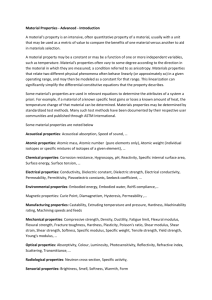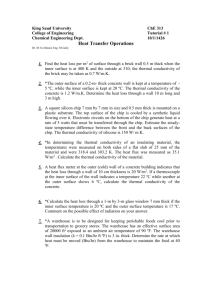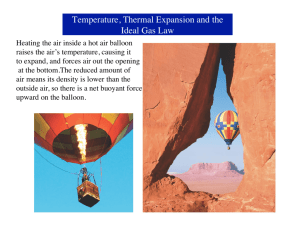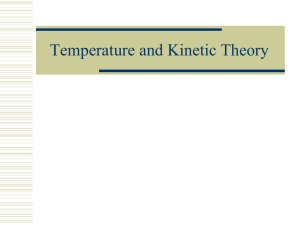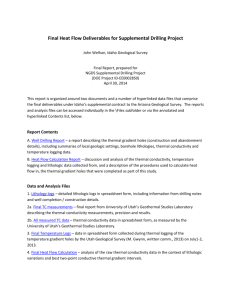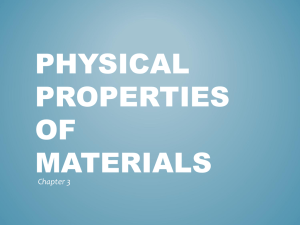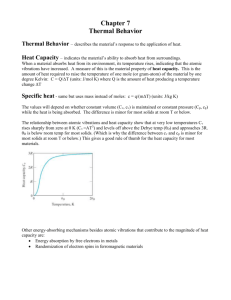Molecular Dynamics Calculations to Determine Thermal
advertisement
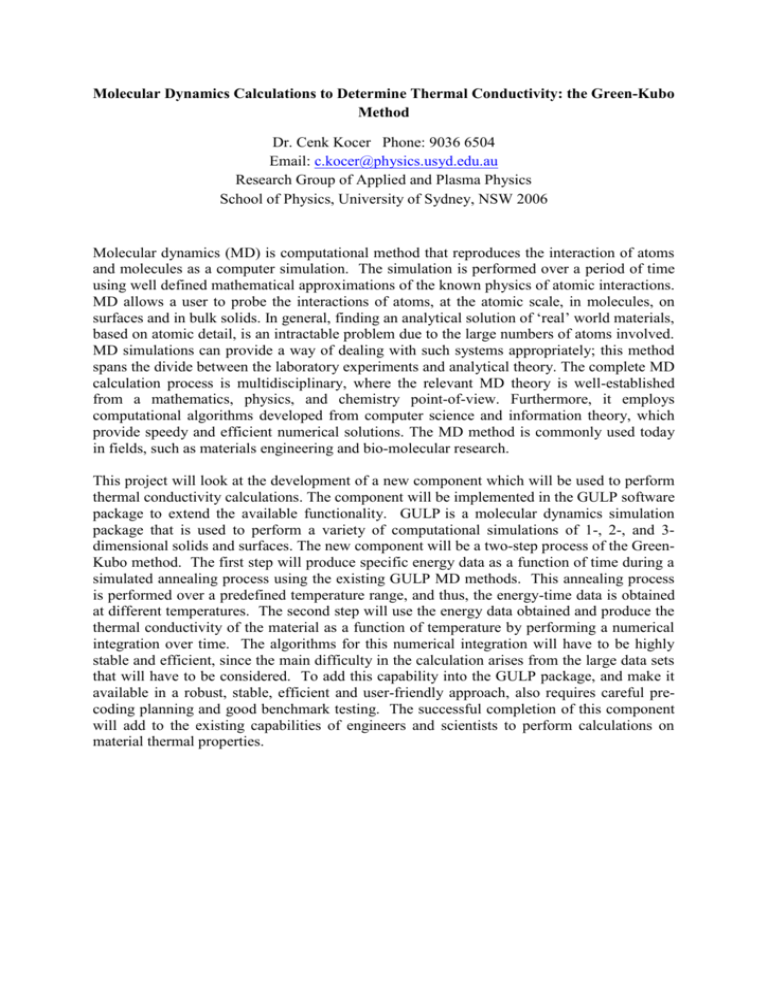
Molecular Dynamics Calculations to Determine Thermal Conductivity: the Green-Kubo Method Dr. Cenk Kocer Phone: 9036 6504 Email: c.kocer@physics.usyd.edu.au Research Group of Applied and Plasma Physics School of Physics, University of Sydney, NSW 2006 Molecular dynamics (MD) is computational method that reproduces the interaction of atoms and molecules as a computer simulation. The simulation is performed over a period of time using well defined mathematical approximations of the known physics of atomic interactions. MD allows a user to probe the interactions of atoms, at the atomic scale, in molecules, on surfaces and in bulk solids. In general, finding an analytical solution of ‘real’ world materials, based on atomic detail, is an intractable problem due to the large numbers of atoms involved. MD simulations can provide a way of dealing with such systems appropriately; this method spans the divide between the laboratory experiments and analytical theory. The complete MD calculation process is multidisciplinary, where the relevant MD theory is well-established from a mathematics, physics, and chemistry point-of-view. Furthermore, it employs computational algorithms developed from computer science and information theory, which provide speedy and efficient numerical solutions. The MD method is commonly used today in fields, such as materials engineering and bio-molecular research. This project will look at the development of a new component which will be used to perform thermal conductivity calculations. The component will be implemented in the GULP software package to extend the available functionality. GULP is a molecular dynamics simulation package that is used to perform a variety of computational simulations of 1-, 2-, and 3dimensional solids and surfaces. The new component will be a two-step process of the GreenKubo method. The first step will produce specific energy data as a function of time during a simulated annealing process using the existing GULP MD methods. This annealing process is performed over a predefined temperature range, and thus, the energy-time data is obtained at different temperatures. The second step will use the energy data obtained and produce the thermal conductivity of the material as a function of temperature by performing a numerical integration over time. The algorithms for this numerical integration will have to be highly stable and efficient, since the main difficulty in the calculation arises from the large data sets that will have to be considered. To add this capability into the GULP package, and make it available in a robust, stable, efficient and user-friendly approach, also requires careful precoding planning and good benchmark testing. The successful completion of this component will add to the existing capabilities of engineers and scientists to perform calculations on material thermal properties.
